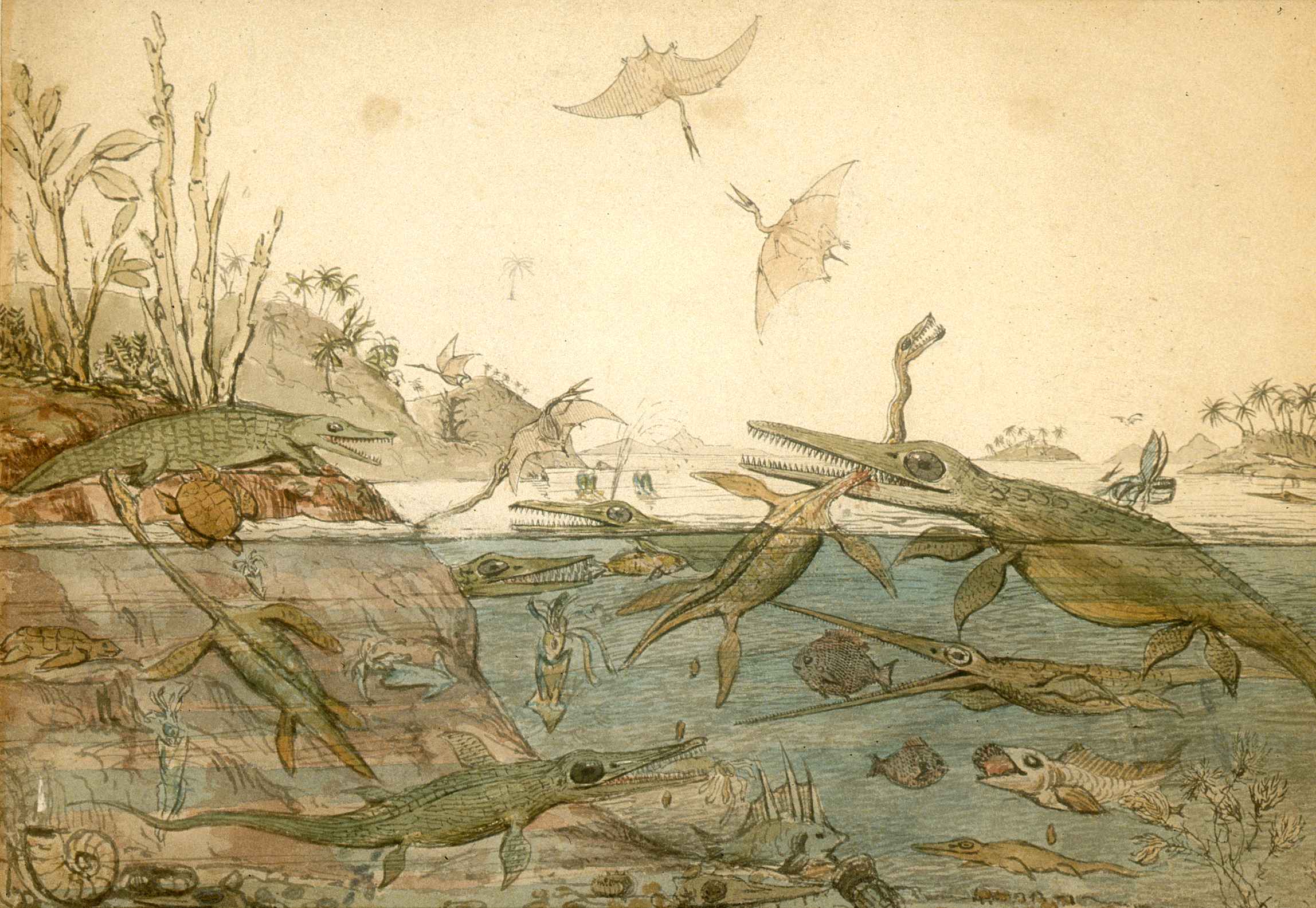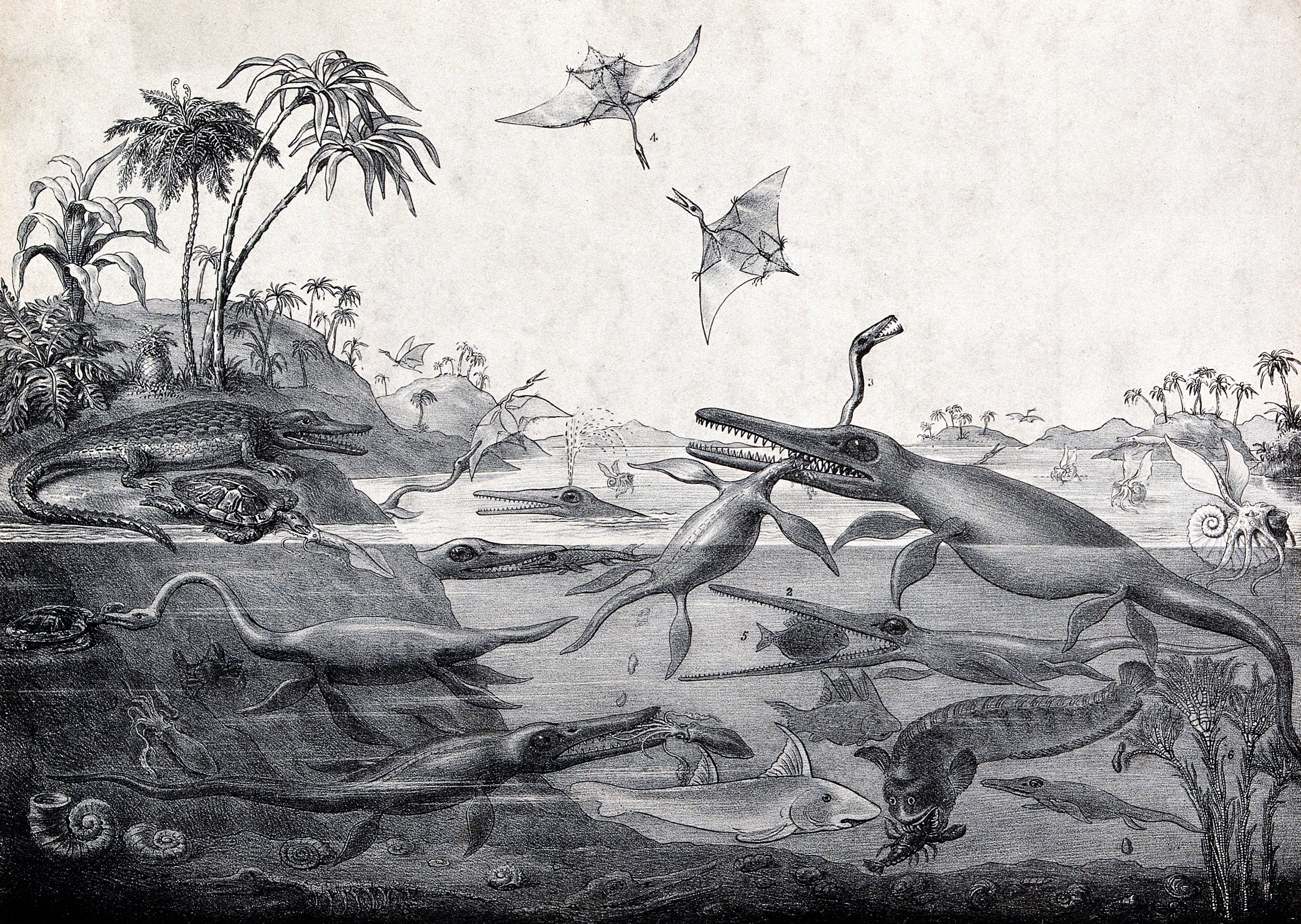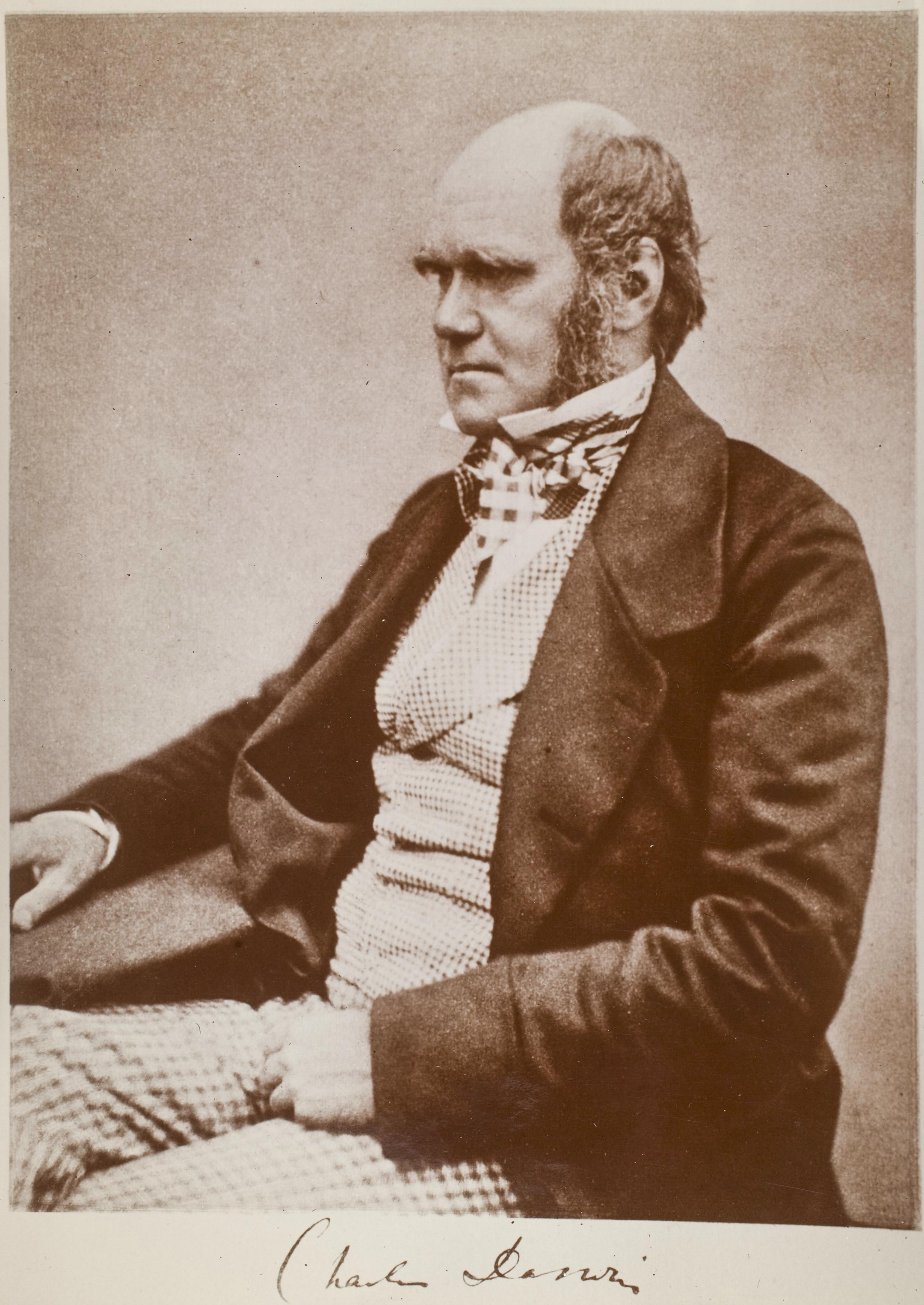|
History Of Paleontology
The history of paleontology traces the history of the effort to understand the history of life on Earth by studying the fossil record left behind by living organisms. Since it is concerned with understanding living organisms of the past, paleontology can be considered to be a field of biology, but its historical development has been closely tied to geology and the effort to understand the history of Earth itself. In ancient times, Xenophanes (570–480 BC), Herodotus (484–425 BC), Eratosthenes (276–194 BC), and Strabo (64 BC–24 AD) wrote about fossils of marine organisms, indicating that land was once under water. The ancient Chinese considered them to be dragon bones and documented them as such. During the Middle Ages, fossils were discussed by Persian naturalist Ibn Sina (known as ''Avicenna'' in Europe) in ''The Book of Healing'' (1027), which proposed a theory of petrifying fluids that Albert of Saxony would elaborate on in the 14th century. The Chinese naturalist Shen ... [...More Info...] [...Related Items...] OR: [Wikipedia] [Google] [Baidu] |
Duria Antiquior
''Duria Antiquior, a more ancient Dorset'', was the first pictorial representation of a scene of prehistoric life based on evidence from fossil reconstructions, a genre now known as paleoart. The first version was a watercolour painted in 1830 by the English geologist Henry De la Beche based on fossils found in Lyme Regis, Dorset, mostly by the professional fossil collector Mary Anning. De la Beche had the professional artist Georg Scharf produce lithographic prints based on the painting, which he sold to friends to raise money for Anning's benefit. It was the first depiction of a scene from deep time to see even limited publication. The print was used for educational purposes and widely circulated in scientific circles; it influenced several other such depictions that began to appear in both scientific and popular literature. Several later versions were produced. Origin of the painting and the lithograph By 1830 Mary Anning was well known to the leading British geologists and ... [...More Info...] [...Related Items...] OR: [Wikipedia] [Google] [Baidu] |
Early Modern Europe
Early modern Europe, also referred to as the post-medieval period, is the period of European history between the end of the Middle Ages and the beginning of the Industrial Revolution, roughly the late 15th century to the late 18th century. Historians variously mark the beginning of the early modern period with the invention of moveable type printing in the 1450s, the Fall of Constantinople and end of the Hundred Years’ War in 1453, the end of the Wars of the Roses in 1485, the beginning of the High Renaissance in Italy in the 1490s, the end of the Reconquista and subsequent voyages of Christopher Columbus to the Americas in 1492, or the start of the Protestant Reformation in 1517. The precise dates of its end point also vary and are usually linked with either the start of the French Revolution in 1789 or with the more vaguely defined beginning of the Industrial Revolution in late 18th century England. Some of the more notable trends and events of the early modern period include ... [...More Info...] [...Related Items...] OR: [Wikipedia] [Google] [Baidu] |
Human Evolution
Human evolution is the evolutionary process within the history of primates that led to the emergence of ''Homo sapiens'' as a distinct species of the hominid family, which includes the great apes. This process involved the gradual development of traits such as human bipedalism and language, as well as interbreeding with other hominins, which indicate that human evolution was not linear but a web.Human Hybrids (PDF). Michael F. Hammer. ''Scientific American'', May 2013. The study of human evolution involves scientific disciplines, including [...More Info...] [...Related Items...] OR: [Wikipedia] [Google] [Baidu] |
Evolution
Evolution is change in the heritable characteristics of biological populations over successive generations. These characteristics are the expressions of genes, which are passed on from parent to offspring during reproduction. Variation tends to exist within any given population as a result of genetic mutation and recombination. Evolution occurs when evolutionary processes such as natural selection (including sexual selection) and genetic drift act on this variation, resulting in certain characteristics becoming more common or more rare within a population. The evolutionary pressures that determine whether a characteristic is common or rare within a population constantly change, resulting in a change in heritable characteristics arising over successive generations. It is this process of evolution that has given rise to biodiversity at every level of biological organisation, including the levels of species, individual organisms, and molecules. The theory of evolution by ... [...More Info...] [...Related Items...] OR: [Wikipedia] [Google] [Baidu] |
On The Origin Of Species
''On the Origin of Species'' (or, more completely, ''On the Origin of Species by Means of Natural Selection, or the Preservation of Favoured Races in the Struggle for Life''),The book's full original title was ''On the Origin of Species by Means of Natural Selection, or the Preservation of Favoured Races in the Struggle for Life''. In the 1872 sixth edition, "On" was omitted, so the full title is ''The origin of species by means of natural selection, or the preservation of favoured races in the struggle for life.'' This edition is usually known as ''The Origin of Species.'' The 6th is Darwin's final edition; there were minor modifications in the text of certain subsequent issues. See Freeman, R. B. In Van Wyhe, John, ed. ''Darwin Online: On the Origin of Species'', 2002. published on 24 November 1859, is a work of scientific literature by Charles Darwin that is considered to be the foundation of evolutionary biology. Darwin's book introduced the scientific theory that populatio ... [...More Info...] [...Related Items...] OR: [Wikipedia] [Google] [Baidu] |
Charles Darwin
Charles Robert Darwin ( ; 12 February 1809 – 19 April 1882) was an English naturalist, geologist, and biologist, widely known for his contributions to evolutionary biology. His proposition that all species of life have descended from a common ancestor is now generally accepted and considered a fundamental concept in science. In a joint publication with Alfred Russel Wallace, he introduced his scientific theory that this branching pattern of evolution resulted from a process he called natural selection, in which the struggle for existence has a similar effect to the artificial selection involved in selective breeding. Darwin has been described as one of the most influential figures in human history and was honoured by burial in Westminster Abbey. Darwin's early interest in nature led him to neglect his medical education at the University of Edinburgh; instead, he helped to investigate marine invertebrates. His studies at the University of Cambridge's Christ's Col ... [...More Info...] [...Related Items...] OR: [Wikipedia] [Google] [Baidu] |
Transmutation Of Species
Transmutation of species and transformism are unproven 18th and 19th-century evolutionary ideas about the change of one species into another that preceded Charles Darwin's theory of natural selection. The French ''Transformisme'' was a term used by Jean Baptiste Lamarck in 1809 for his theory, and other 18th and 19th century proponents of pre-Darwinian evolutionary ideas included Denis Diderot, Étienne Geoffroy Saint-Hilaire, Erasmus Darwin, Robert Grant, and Robert Chambers, the anonymous author of the book ''Vestiges of the Natural History of Creation''. Opposition in the scientific community to these early theories of evolution, led by influential scientists like the anatomists Georges Cuvier and Richard Owen, and the geologist Charles Lyell, was intense. The debate over them was an important stage in the history of evolutionary thought and influenced the subsequent reaction to Darwin's theory. Terminology Transmutation was one of the names commonly used for evolutionary ... [...More Info...] [...Related Items...] OR: [Wikipedia] [Google] [Baidu] |
Geologic Time Scale
The geologic time scale, or geological time scale, (GTS) is a representation of time based on the rock record of Earth. It is a system of chronological dating that uses chronostratigraphy (the process of relating strata to time) and geochronology (scientific branch of geology that aims to determine the age of rocks). It is used primarily by Earth scientists (including geologists, paleontologists, geophysicists, geochemists, and paleoclimatologists) to describe the timing and relationships of events in geologic history. The time scale has been developed through the study of rock layers and the observation of their relationships and identifying features such as lithologies, paleomagnetic properties, and fossils. The definition of standardized international units of geologic time is the responsibility of the International Commission on Stratigraphy (ICS), a constituent body of the International Union of Geological Sciences (IUGS), whose primary objective is to precisely define ... [...More Info...] [...Related Items...] OR: [Wikipedia] [Google] [Baidu] |
Stratigraphy
Stratigraphy is a branch of geology concerned with the study of rock (geology), rock layers (Stratum, strata) and layering (stratification). It is primarily used in the study of sedimentary rock, sedimentary and layered volcanic rocks. Stratigraphy has three related subfields: lithostratigraphy (lithologic stratigraphy), biostratigraphy (biologic stratigraphy), and chronostratigraphy (stratigraphy by age). Historical development Catholic priest Nicholas Steno established the theoretical basis for stratigraphy when he introduced the law of superposition, the principle of original horizontality and the principle of lateral continuity in a 1669 work on the fossilization of organic remains in layers of sediment. The first practical large-scale application of stratigraphy was by William Smith (geologist), William Smith in the 1790s and early 19th century. Known as the "Father of English geology", Smith recognized the significance of Stratum, strata or rock layering and the importance ... [...More Info...] [...Related Items...] OR: [Wikipedia] [Google] [Baidu] |
Comparative Anatomy
Comparative anatomy is the study of similarities and differences in the anatomy of different species. It is closely related to evolutionary biology and phylogeny (the evolution of species). The science began in the classical era, continuing in the early modern period with work by Pierre Belon who noted the similarities of the skeletons of birds and humans. Comparative anatomy has provided evidence of common descent, and has assisted in the classification of animals. History The first specifically anatomical investigation separate from a surgical or medical procedure is associated by Alcmaeon of Croton. Leonardo da Vinci made notes for a planned anatomical treatise in which he intended to compare the hands of various animals including bears. Pierre Belon, a French naturalist born in 1517, conducted research and held discussions on dolphin embryos as well as the comparisons between the skeletons of birds to the skeletons of humans. His research led to modern comparative anato ... [...More Info...] [...Related Items...] OR: [Wikipedia] [Google] [Baidu] |
Extinction
Extinction is the termination of a kind of organism or of a group of kinds (taxon), usually a species. The moment of extinction is generally considered to be the death of the last individual of the species, although the capacity to breed and recover may have been lost before this point. Because a species' potential range may be very large, determining this moment is difficult, and is usually done retrospectively. This difficulty leads to phenomena such as Lazarus taxa, where a species presumed extinct abruptly "reappears" (typically in the fossil record) after a period of apparent absence. More than 99% of all species that ever lived on Earth, amounting to over five billion species, are estimated to have died out. It is estimated that there are currently around 8.7 million species of eukaryote globally, and possibly many times more if microorganisms, like bacteria, are included. Notable extinct animal species include non-avian dinosaurs, saber-toothed cats, dodos, m ... [...More Info...] [...Related Items...] OR: [Wikipedia] [Google] [Baidu] |
Georges Cuvier
Jean Léopold Nicolas Frédéric, Baron Cuvier (; 23 August 1769 – 13 May 1832), known as Georges Cuvier, was a French natural history, naturalist and zoology, zoologist, sometimes referred to as the "founding father of paleontology". Cuvier was a major figure in natural sciences research in the early 19th century and was instrumental in establishing the fields of comparative anatomy and paleontology through his work in comparing living animals with fossils. Cuvier's work is considered the foundation of vertebrate paleontology, and he expanded Linnaean taxonomy by grouping classes into phylum, phyla and incorporating both fossils and living species into the classification. Cuvier is also known for establishing extinction as a fact—at the time, extinction was considered by many of Cuvier's contemporaries to be merely controversial speculation. In his ''Essay on the Theory of the Earth'' (1813) Cuvier proposed that now-extinct species had been wiped out by periodic catastrophi ... [...More Info...] [...Related Items...] OR: [Wikipedia] [Google] [Baidu] |







.jpg)
